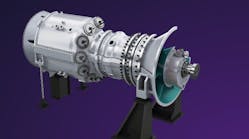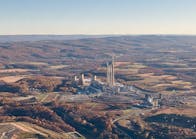Navajo Tribal Energy Transition Company gains $6.55M DOE Grant for Power Plant Carbon Capture Feasibility Study
The U.S. Department of Energy (DOE) Office of Clean Energy Demonstrations (OCED) has awarded Navajo Transitional Energy Company (NTEC) a grant worth $6.55 million for a Front End Engineering Design (FEED) study to evaluate the feasibility of adding carbon capture and storage (CCS) to the coal-fired Four Corners Power Plant (FCPP) in New Mexico.
The addition will not only help remove more than 95 percent of carbon dioxide (CO2) emissions at the 1.5-GW power plant but also protect more than 600 jobs on the Navajo Nation and preserve $183 million per year in total economic impact to the region, while ensuring the reliability of the regional power grid.
The study to evaluate the environmental, economic, and community impacts of equipping FCPP with carbon capture is expected to be completed in 2025. The integrated study will determine the specifications for CO2 capture, transport, and storage at FCPP.
NTEC aims to use amine-based, post-combustion carbon capture technology to remove CO2 from flue gas and extend the life of the plant beyond 2031.
“Each year, Four Corners Power Plant and the Navajo Mine contribute more than 35 percent of the Navajo Nation’s total revenue and employ more than 500 Navajo tribal members, said Vern Lund, NTEC’s Chief Executive Officer.
With the help of the award, OCED intends to de-risk CCS demonstrations and catalyze follow-on investments from the private sector for commercial scaled integrated CCS demonstrations.
Four Corners power plant was originally built and operated as a joint venture with numerous southeast U.S. electric utilities. They planned to close it but that closure was later rejected and an operating interest was acquired by the Navajo Transitional Energy Co.
A study on the potential of carbon capture technologies to help meet net zero goals, posted on the Nature magazine website, forecasts a maximum global storage rate of 16 gigatons of CO2 annually by 2050. The current estimate of annual Co2 emissions from fossil fuels and industry is close to 40 gigatons, according to U.S. federal and global data.
Tech Companies Progressing toward Emissions-Reduction Goals
Amid Grid's Struggle to Meet Surging Demand





